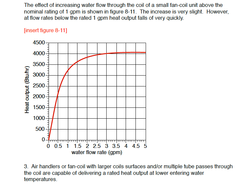I have been thinking about lowering my blower speed on my furnace so its not so loud. Currently I use the fan on terminal (G) to activate my blower. I also use the w terminal for my propane backup with a seperate thermostat. I know changing the heating mode speed could cause the heat exchanger to over heat when using propane but I think I can change the (G) terminal speed sperate from the propane(w) terminal speed. Im aware I would have to change it back in the summer since A/C uses the G terminal to activate the fan. Also, how much heating ability would I lose by lowering my fan speed? Would the increased air temperature offset the reduced air volume? I know lots of questions. Bottom line is I simply want to reduce the drafts in the house and get a more even slow distribution of heat. But I also don't want the blower to run 24/7 because its to slow to heat properly, a happy medium i guess.
WAHX blower speed / temp of air and efficiency
- Thread starter hartkem
- Start date
-
Active since 1995, Hearth.com is THE place on the internet for free information and advice about wood stoves, pellet stoves and other energy saving equipment.
We strive to provide opinions, articles, discussions and history related to Hearth Products and in a more general sense, energy issues.
We promote the EFFICIENT, RESPONSIBLE, CLEAN and SAFE use of all fuels, whether renewable or fossil.


 With wood fired heat it is a tougher go as the supply temperature to the coil would have a wider temperature range compared to a gas fired burner.
With wood fired heat it is a tougher go as the supply temperature to the coil would have a wider temperature range compared to a gas fired burner.